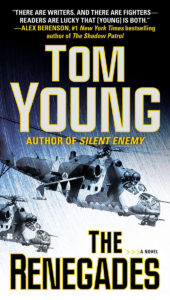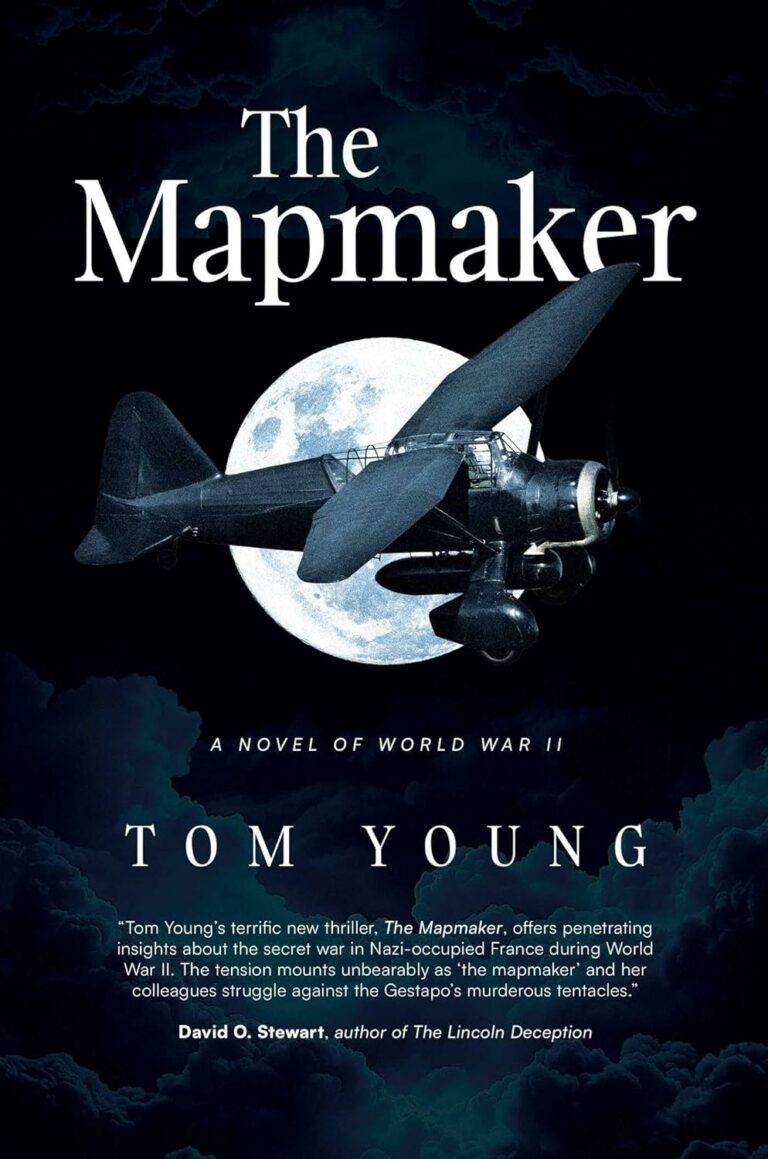The Renegades Backstory
 The Story Behind The Renegades
The Story Behind The Renegades
Michael Parson has had some rough missions. In my first novel, The Mullah’s Storm, he evaded capture in the midst of a blizzard while holding onto a Taliban prisoner. In Silent Enemy, he flew a doomed aircraft more than halfway around the world. And in The Renegades, he and his partner, Sergeant Major Sophia Gold, battle a violent Islamist splinter group.
On these missions, Parson has held different jobs. He began his fictitious career as an Air Force navigator, then cross-trained to pilot, and now appears as an adviser to the Afghan military. Some may think I’ve used artistic license to put him in these varied roles. However, Parson has taken a fairly realistic career path for an aviator and officer.
Air Force fliers don’t just fly. As their careers progress, they take on different duties such as training managers, safety officers, and diplomatic liaisons. Just like Parson in The Renegades, one of my West Virginia Air National Guard squadron mates deployed as an adviser to Afghan fliers, trying to help them create a modern, professional air force. Another of my colleagues worked as an aviation liaison to the Iraqi Ministry of Transportation, helping put Iraq’s civil aviation system back together. He was a pilot, not a bureaucrat. But he used what he knew–sometimes under fire–and he helped bring Iraq a little closer to normalcy.
When service members take on such special duties, they tackle jobs for which there is sometimes no specific school, no War College course. They call on their experience and judgment in situations where they must think on their feet. In The Renegades, Parson faces a number of challenges: the Afghans fly aircraft unfamiliar to him, he doesn’t speak the language, and he’s never worked so closely with foreign forces. But he knows how to lead, and he tries to impart that knowledge to Rashid, a promising Afghan officer. And he knows someone who does speak the language, his old friend Sophia Gold.
In this situation, it’s not outlandish that he’d call on Gold for assistance. In The Mullah’s Storm, they were thrown together by ill fortune. In Silent Enemy, they met again by chance. But this time, Parson sends for her by name. That could happen in real life. By now, the public is familiar with major deployments that call up entire units. However, military personnel can also take combat tours as individual augmentees, the way Gold does to help Parson in The Renegades.
Once Gold arrives in Afghanistan, she and Parson find themselves working closely with different branches of the armed forces. Gold, of course, is an Army translator serving with Parson, an Air Force officer. They encounter Gunnery Sergeant Blount, who leads a team of Marines. The Marines get air support from an Air Force combat controller and medical support from a Navy corpsman.
That sort of interservice cooperation happens in the modern military. People from different branches train together to leverage their combined strengths. Hollywood stereotypes notwithstanding, soldiers and airmen don’t get into fistfights every time they meet in a bar. They’re more likely to swap stories about the last time they worked together. My own helmet bag carries a collection of patches from past missions that included Navy SEALs, Marine riflemen, and Army paratroopers.
Even though I’ve served in the armed forces for almost twenty years, I’m still learning about different specialties in each of the branches. One job I got to explore in The Renegades is pararescue. Air Force pararescuemen are referred to informally as PJs, for pararescue jumpers. Represented in The Renegades by Sergeant Reyes, PJs are medics trained to do whatever it takes to reach a wounded soldier or downed airman. They attend schools that include scuba diving and free-fall parachuting, in a program so tough its washout rate can exceed ninety percent.
You would hate to need the services of a PJ, because that would mean you were having a real bad day. But in a training environment or a social situation, it’s a pleasure to meet people so capable and upbeat.
Another skill crucial to the modern military is winning what counterinsurgency experts call “the human terrain.” Making friends, essentially. Gold has dedicated her life to it. And younger troops follow in her footsteps, like my characters Ann and Lyndsey with the Lioness team. That’s a real program, and that’s its real name (don’t worry; it’s not classified). The role of women in combat zones has expanded greatly in recent years, and not without controversy. But real-world counterparts of Ann and Lyndsey, in meetings with Afghan women, have made contact with a segment of Afghanistan’s population essentially sealed off from American men.
One specialty I’d like to learn more about is working with military dogs. I’ve often flown dogs on airlift missions. When the animals get loaded on board, they usually bark constantly in their kennels until takeoff. Then they go right to sleep. On landing, the barking starts again. Those canine passengers inspired the Belgian Malinois that survived the Mi-17 crash landing in The Renegades. That breed makes good military dogs. I met one several years ago at a base in the Middle East while waiting for cargo and troops to show up at my aircraft. A dog handler and his bomb-sniffing Malinois arrived early. The rest of the troops got delayed for several hours. We passed the time by playing with the dog and feeding it pizza.
Sergeant Major Gold’s High Altitude/Low Opening parachute drops also come right out of the real world. Back in my C-130 days, I got more of a kick out of HALO drops than any other flight operations. I have especially fond memories of a training mission well before 9/11, at the former Indian Springs Auxiliary Field, Nevada (now Creech Air Force Base). My crew flew Army Special Forces jumpers on HALO drops for about a week.
Each day we’d do two drops, break for dinner, and come back for a night drop. All at high altitude, unpressurized, on oxygen. With no higher rank present than a captain, we had no adult supervision at all. Just a bunch of young guys who thought we were bulletproof, and an airplane and parachutes to play with. It was glorious.
As it happens, I got my first look at a Predator drone during that training mission. The Predators were still fairly new then, developed in a program at Indian Springs. I saw them next in Bosnia, and later in Southwest Asia.
Like my previous novels The Mullah’s Storm and Silent Enemy, I wrote The Renegades for two reasons: First, I wanted to create a compelling story that readers would find entertaining; I’ve always loved fiction. But through these novels, I also wanted to convey something about the motivations and mindsets of American servicemen and women. I hope my books do justice to their dedication, and to the expertise their work requires.
